Composite Behavior of Insulated Concrete Sandwich Wall Panels Subjected to Wind Pressure and Suction
Abstract
:1. Introduction
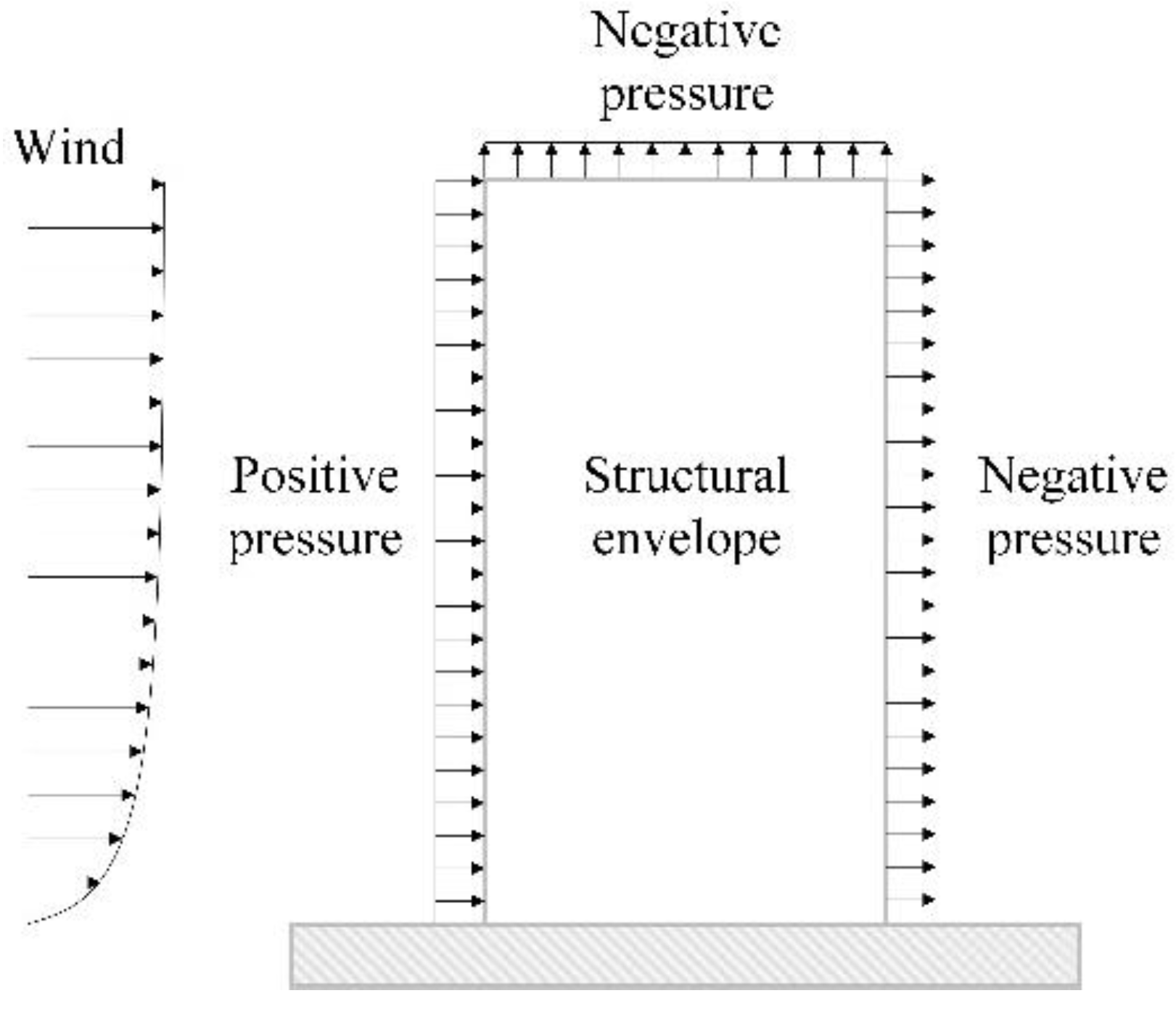
2. Materials and Experimental Test
2.1. Description of Test Specimen
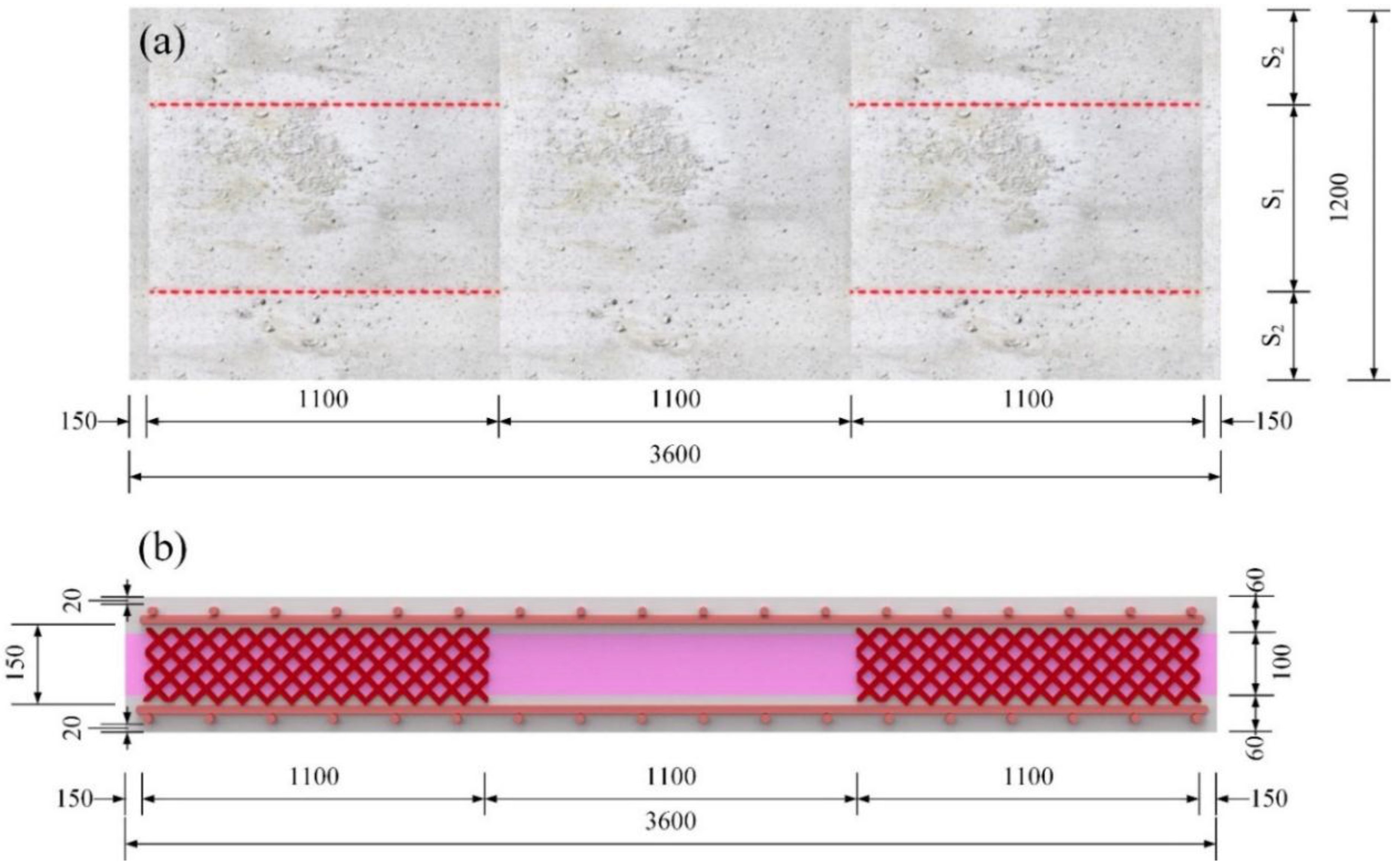

| Load direction | No. | Label | Insulation type | No. of grids | S1 (mm) | S2 (mm) | GFRP strands |
|---|---|---|---|---|---|---|---|
| Positive | 1 | XPSST2_P | XPSST | 2 | 300 | 600 | 4400TEX 3 strands |
| 2 | XPSST3_P | 3 | 200 | 400 | |||
| 3 | XPSST4_P | 4 | 150 | 300 | |||
| 4 | XPSNB2_P | No bond | 2 | 300 | 600 | 4400TEX 3 strands | |
| 5 | XPSNB3_P | 3 | 200 | 400 | |||
| 6 | XPSNB4_P | 4 | 150 | 300 | |||
| 7 | EPS2_P | EPS | 2 | 300 | 600 | 4400TEX 3 strands | |
| 8 | EPS3_P | 3 | 200 | 400 | |||
| 9 | EPS4_P | 4 | 150 | 300 | |||
| Negative | 10 | XPSST2_N | XPSST | 2 | 300 | 600 | 4400TEX 3 strands |
| 11 | XPSST3_N | 3 | 200 | 400 | |||
| 12 | XPSST4_N | 4 | 150 | 300 | |||
| 13 | XPSNB2_N | No bond | 2 | 300 | 600 | 4400TEX 3 strands | |
| 14 | XPSNB3_N | 3 | 200 | 400 | |||
| 15 | XPSNB4_N | 4 | 150 | 300 | |||
| 16 | EPS2_N | EPS | 2 | 300 | 600 | 4400TEX 3 strands | |
| 17 | EPS3_N | 3 | 200 | 400 | |||
| 18 | EPS4_N | 4 | 150 | 300 |
2.2. Material Properties
2.2.1. Concrete
2.2.2. Wire Mesh
2.2.3. GFRP Shear Grids
2.3. Test Parameters
2.4. Test Setup and Procedure

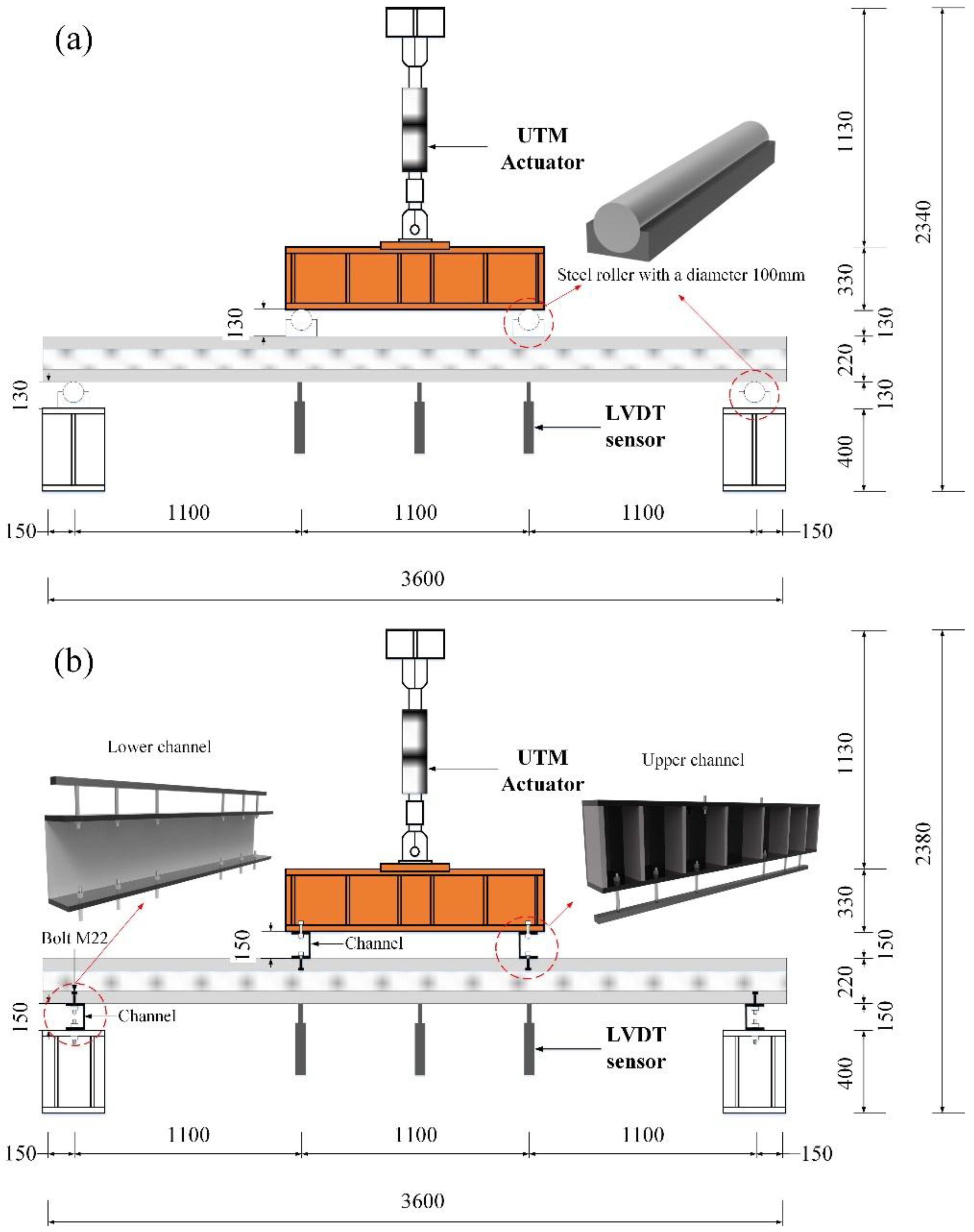
3. Results and Discussion
3.1. Load-Deflection Behavior Subjected to Positive and Negative Loading Tests
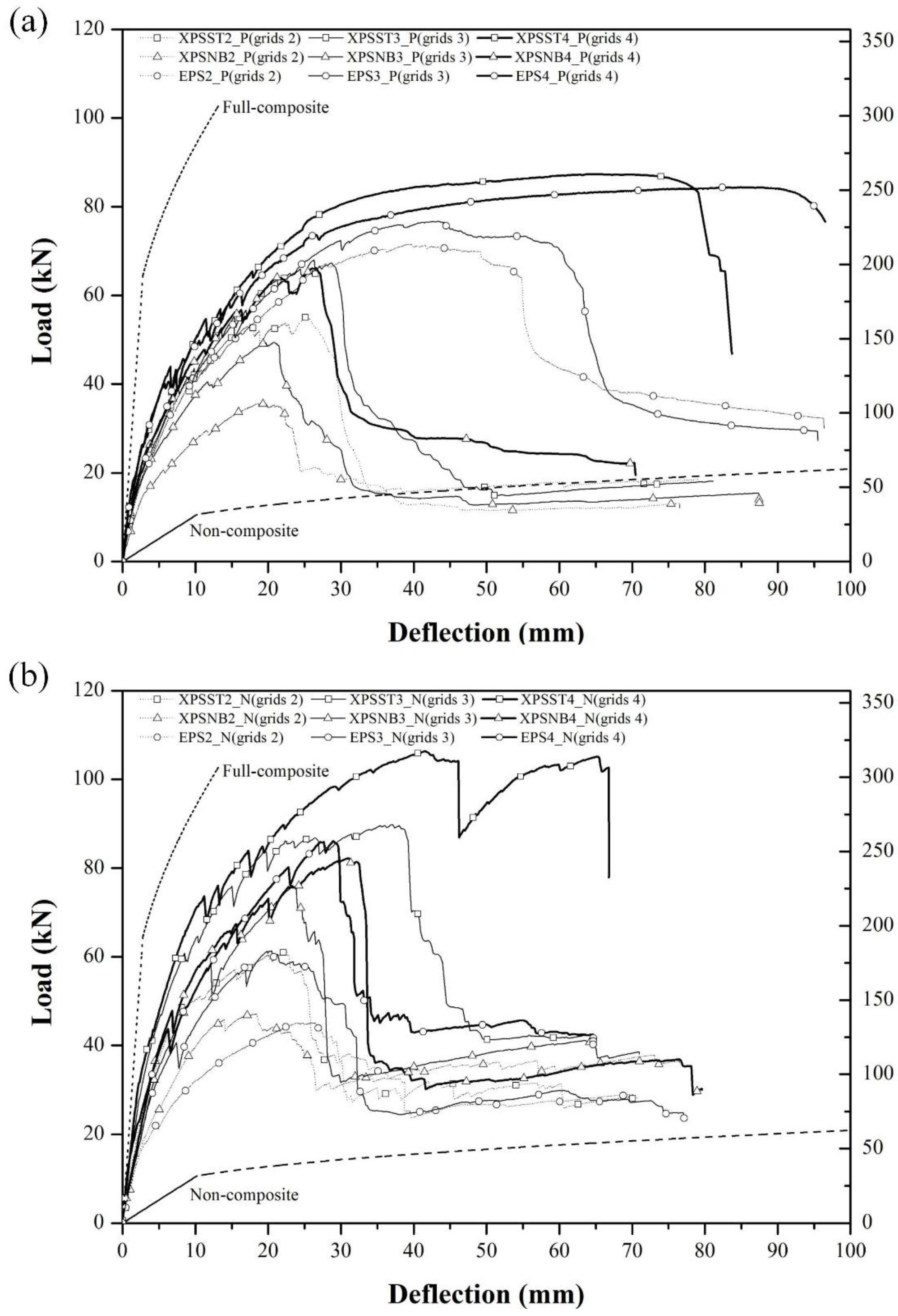
3.2. Failure Mode of Specimens

| Label | Maximum Load (kN) | Deflection † (mm) | Failure Deflection (mm) | Failure Mode |
|---|---|---|---|---|
| XPSST2_P | 55.0 | 25.1 | 26.0 | Bond failure, shear grid rupture |
| XPSST3_P | 68.0 | 26.3 | 29.4 | Bond failure, shear grid rupture |
| XPSST4_P | 87.4 | 64.2 | 79.1 | Steel fracture |
| XPSST2_N | 60.3 | 19.6 | 20.2 | Bond failure, shear grid rupture |
| XPSST3_N | 89.3 | 35.8 | 36.6 | Bond failure, shear grid rupture |
| XPSST4_N | 105.9 | 39.6 | 66.8 | Steel fracture |
| XPSNB2_P | 35.6 | 18.3 | 21.2 | Bond failure, shear grid rupture |
| XPSNB3_P | 49.5 | 19.5 | 21.3 | Bond failure, shear grid rupture |
| XPSNB4_P | 66.1 | 26.3 | 26.6 | Bond failure, shear grid rupture |
| XPSNB2_N | 50.0 | 17.8 | 18.8 | Bond failure, shear grid rupture |
| XPSNB3_N | 75.4 | 22.6 | 23.4 | Bond failure, shear grid rupture |
| XPSNB4_N | 82.0 | 30.5 | 31.9 | Bond failure, shear grid rupture |
| EPS2_P | 71.6 | 39.2 | 52.8 | Insulation shear failure, shear grid rupture |
| EPS3_P | 76.8 | 43.5 | 55.1 | Insulation shear failure, shear grid rupture |
| EPS4_P | 84.4 | 55.5 | 94.6 | Steel fracture |
| EPS2_N | 44.9 | 23.3 | 24.1 | Bond failure, shear grid rupture |
| EPS3_N | 60.9 | 19.0 | 19.9 | Bond failure, shear grid rupture |
| EPS4_N | 85.2 | 25.5 | 27.5 | Bond failure, shear grid rupture |

4. Composite Action
4.1. Degree of Composite Action
| Label | Degree of composite action in terms of initial stiffness | Degree of composite action in terms of ultimate strength | ||||
|---|---|---|---|---|---|---|
| Cracking load (kN) | Displacement (mm) | Iexp (106 mm4) | (%) | Ultimate strength (kN) | (%) | |
| Full-composite | 64.5 | 2.78 | 964.8 | 100 | 102.6 | 100 |
| Non-composite | 10.6 | 10.20 | 43.2 | 0 | 28.3 | 0 |
| XPSST2_P | 23.1 | 3.65 | 253.7 | 23 | 55.0 | 36 |
| XPSST2_N | 28.6 | 3.35 | 344.2 | 33 | 60.3 | 43 |
| XPSST3_P | 20.3 | 2.77 | 293.8 | 27 | 68.0 | 53 |
| XPSST3_N | 32.9 | 2.90 | 457.3 | 45 | 89.3 | 82 |
| XPSST4_P | 26.1 | 2.71 | 386.8 | 37 | 87.4 | 80 |
| XPSST4_N | 35.3 | 2.97 | 510.0 | 51 | 105.9 | 104 |
| XPSNB2_P | 15.8 | 3.25 | 218.9 | 19 | 35.6 | 10 |
| XPSNB2_N | 24.2 | 4.34 | 226.3 | 20 | 50.0 | 29 |
| XPSNB3_P | 23.4 | 4.03 | 260.8 | 24 | 49.5 | 29 |
| XPSNB3_N | 34.7 | 4.85 | 290.0 | 27 | 75.4 | 63 |
| XPSNB4_P | 25.9 | 3.53 | 330.3 | 31 | 66.1 | 51 |
| XPSNB4_N | 29.5 | 3.48 | 343.8 | 33 | 82.0 | 72 |
| EPS2_P | 20.8 | 3.33 | 274.5 | 25 | 71.6 | 58 |
| EPS2_N | 22.4 | 4.79 | 188.8 | 16 | 44.9 | 22 |
| EPS3_P | 26.5 | 3.77 | 306.9 | 29 | 76.8 | 65 |
| EPS3_N | 38.8 | 6.77 | 231.1 | 20 | 60.9 | 44 |
| EPS4_P | 26.4 | 2.76 | 417.8 | 41 | 84.4 | 76 |
| EPS4_N | 43.8 | 6.23 | 283.9 | 26 | 85.2 | 77 |
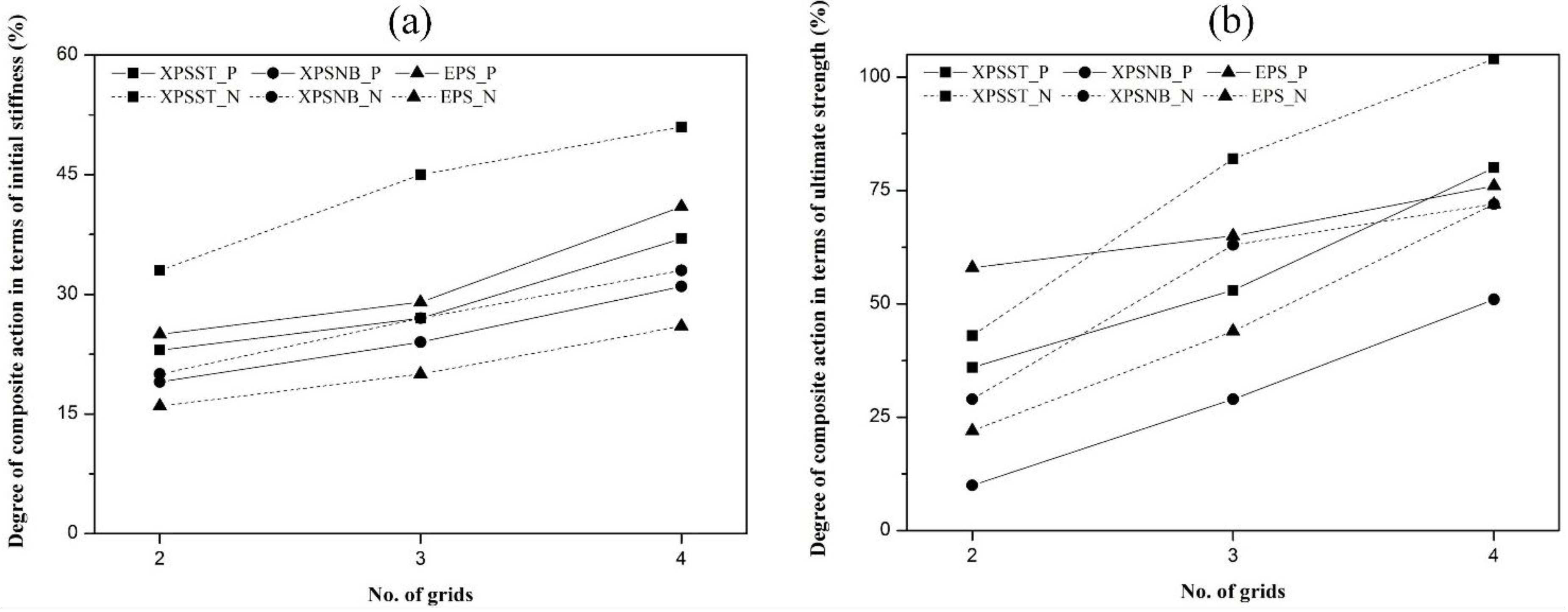
4.2. Shear Flow Capacity of Connecting Elements

| Load direction | No. of grids | First load peak (kN) | Mechanical bond strength (kN) | Ultimate strength of XPSST specimens (kN) | Effective shear flow strength (kN/m) | |
|---|---|---|---|---|---|---|
| XPSST | XPSNB | |||||
| Positive | 2 | 40.4 | 20.7 | 19.7 | 55.0 | 52.8 |
| 3 | 41.6 | 23.9 | 17.7 | 68.0 | 50.1 | |
| 4 | 45.8 | 26.4 | 19.4 | 87.4 | 50.7 | |
| Negative | 2 | 48.5 | 25.6 | 22.9 | 60.3 | 55.8 |
| 3 | 60.8 | 36.8 | 24 | 89.3 | 65.1 | |
| 4 | 65.8 | 47.9 | 17.9 | 105.9 | 65.7 | |
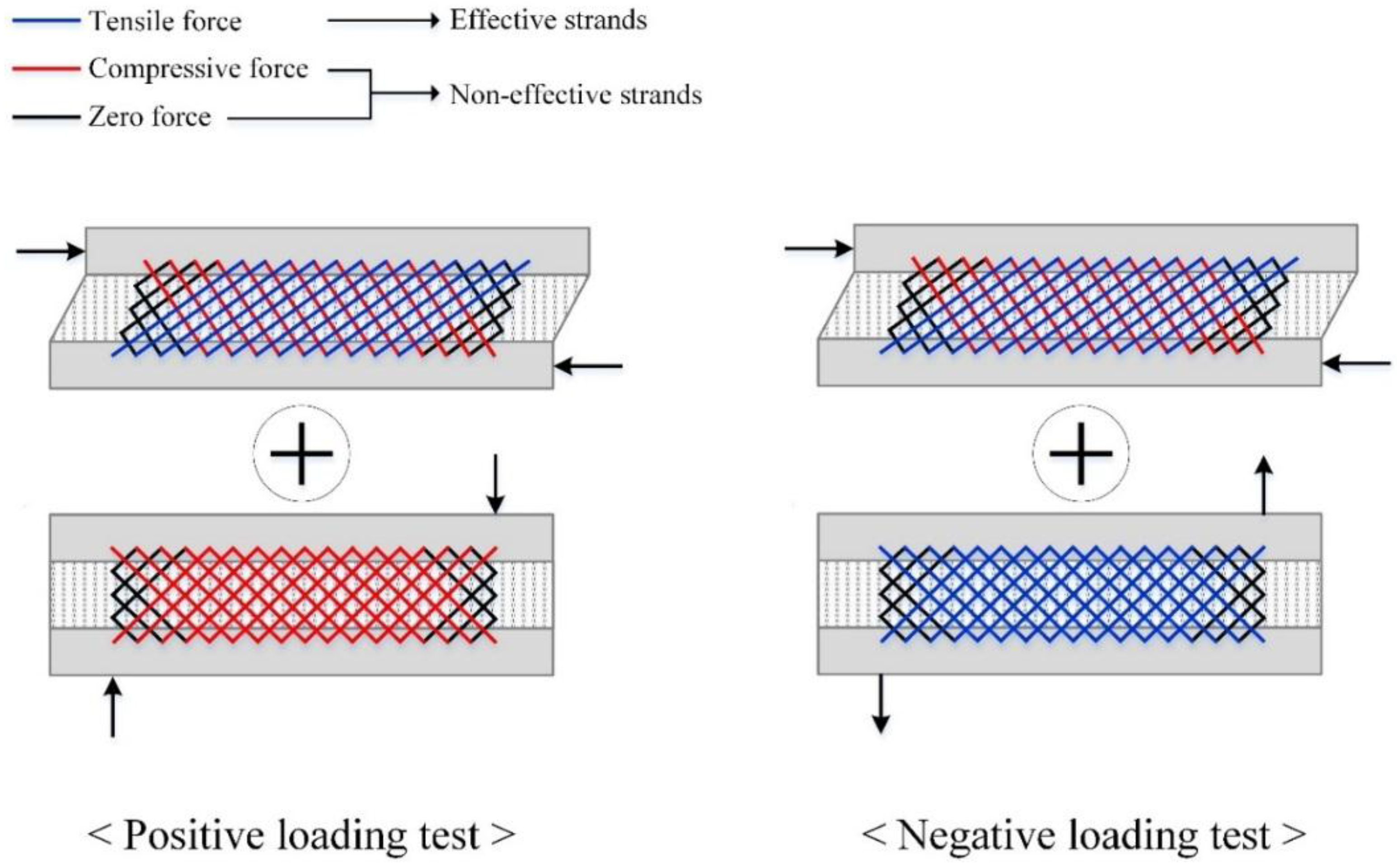
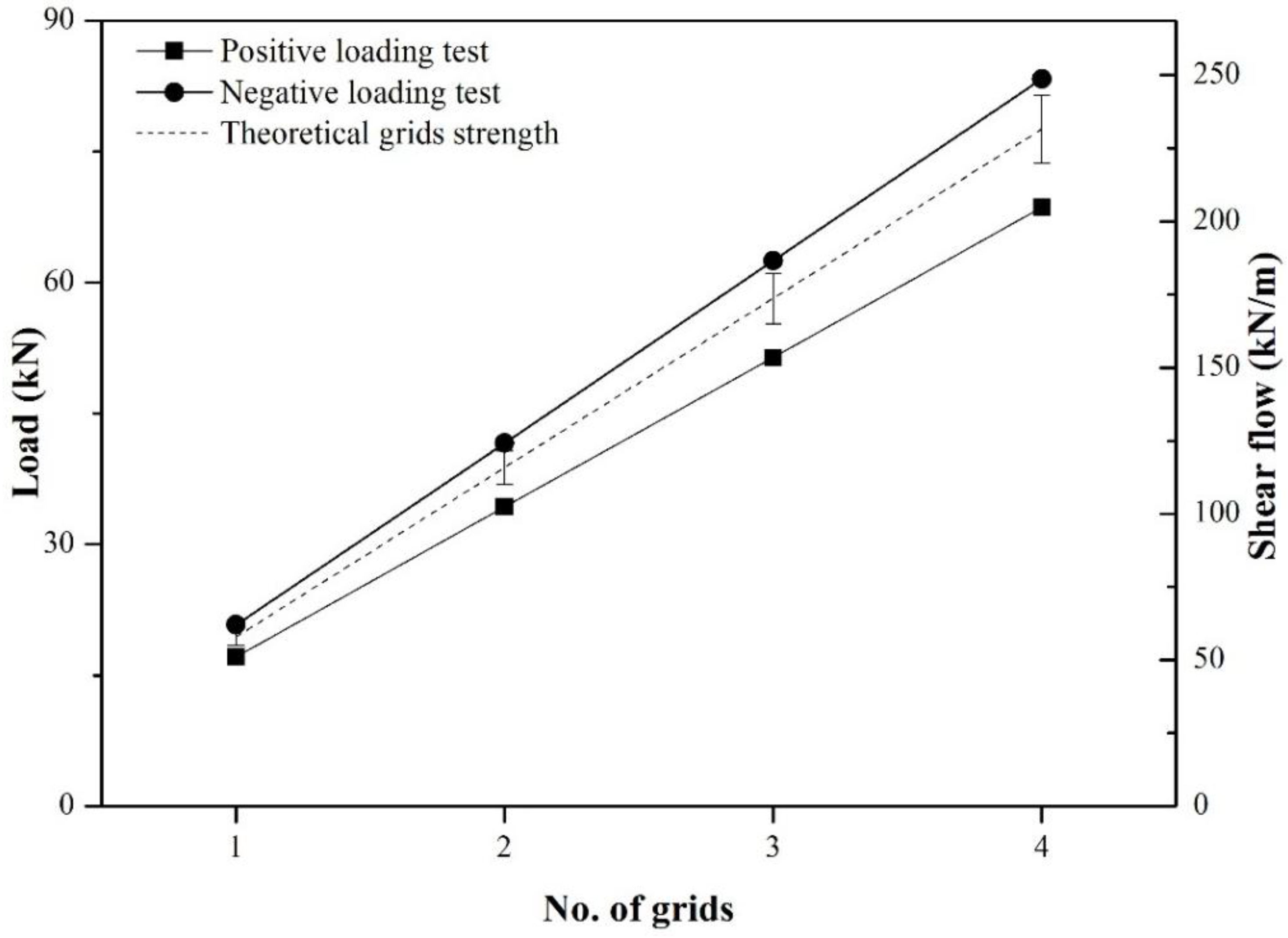
5. Conclusions
Acknowledgments
Author Contributions
Conflicts of Interest
References
- Naito, C.; Hoemann, J.; Beacraft, M.; Bewick, B. Performance and characterization of shear ties for use in insulated precast concrete sandwich wall panels. J. Struct. Eng. ASCE 2012, 138, 52–61. [Google Scholar] [CrossRef]
- Pessiki, S.; Mlynarczyk, A. Experimental evaluation of the composite behavior of precast concrete sandwich wall panels. PCI J. 2003, 48, 54–71. [Google Scholar] [CrossRef]
- Lee, B.J.; Pessiki, S. Design and analysis of precast, prestressed concrete, three-wythe sandwich wall panels. PCI J. 2007, 52, 70–83. [Google Scholar] [CrossRef]
- Einea, A.; Salmon, D.C.; Tadros, M.K.; Culp, T. A new structurally and thermally efficient precast sandwich panel system. PCI J. 1994, 39, 90–101. [Google Scholar] [CrossRef]
- Bush, T.D.; Stine, G.L. Flexural behavior of composite precast concrete sandwich panels with continuous truss connectors. PCI J. 1994, 39, 112–121. [Google Scholar] [CrossRef]
- Salmon, D.C.; Einea, A.; Tadros, M.K.; Culp, T.D. Full scale testing of precast concrete sandwich panels. ACI Struct. J. 1997, 94, 354–362. [Google Scholar]
- Frankl, B.A.; Lucier, G.W.; Hassan, T.K.; Rizkalla, S.H. Behavior of precast, prestressed concrete sandwich wall panels reinforced with cfrp shear grid. PCI J. 2011, 56, 42–54. [Google Scholar] [CrossRef]
- Frankl, B.; Lucier, G.; Rizkalla, S.; Blaszak, G.; Harmon, T. Structural behavior of insulated prestressed concrete sandwich panels reinforced with frp grid. In Proceedings of the Fourth International Conference on FRP Composites in Civil Engineering (CICE2008), Zurich, Switzerland, 22–24 July 2008.
- Morcous, G.; Tadros, M.K.; Lafferty, M.; Gremel, D. Optimized nu sandwich panel system for energy, composite action and production efficiency. In Proceedings of the third International Congress and Fib Exhibition, Washington, DC, USA, 29 May–2 June 2010.
- Woltman, G.D.; Tomlinson, D.G.; Fam, A. A comparative study of various frp shear connectors for sandwich concrete walls. In Proceedings of the FRP Composite in Cilvil Engineering, Beijing, China, 27–29 Septepber 2010; pp. 237–240.
- Tomlinson, D.; Fam, A. Experimental investigation of precast concrete insulated sandwich panels with glass fiber-reinforced polymer shear connectors. ACI Struct. J. 2014, 111, 595–605. [Google Scholar]
- Hassan, T.K.; Rizkalla, S.H. Analysis and design guidelines of precast, prestressed concrete, composite load-bearing sandwich wall panels reinforced with cfrp grid. PCI J. 2010, 55, 147–162. [Google Scholar] [CrossRef]
- Oh, T.S.; Jang, S.J.; Lee, K.M.; Yun, H.D. Insulation type effect on the direct shear behavior of concrete sandwich panel (csp) with non-shear connectors. Adv. Mater. Res. 2013, 993, 154–158. [Google Scholar] [CrossRef]
- Soriano, J.; Rizkalla, S. Use of frp grid for the composite action of concrete sandwich panels. In Proceedings of the 11th International Symposium on Fiber Reinforced Polymer for Reinforced Concrete Structures (FRPRCS11), Guimarães, Portugal, 26–28 June 2013.
- Kim, J.; You, Y.-C. Composite behavior of a novel insulated concrete sandwich wall panel reinforced with GFRP shear grids: Effects of insulation types. Materials 2015, 8, 899–913. [Google Scholar] [CrossRef]
- ACI Committee. Building Code Requirements for Structural Concrete (aci 318–11) and Commentary; American Concrete Institute: Farmington Hills, MI, USA, 2011; p. 503. [Google Scholar]
- Benayoune, A.; Samad, A.A.A.; Trikha, D.N.; Ali, A.A.A.; Ellinna, S.H.M. Flexural behaviour of pre-cast concrete sandwich composite panel—Experimental and theoretical investigations. Constr. Build. Mater. 2008, 22, 580–592. [Google Scholar] [CrossRef]
- Mohamad, N.; Khalil, A.I.; Abdul Samad, A.A.; Goh, W.I. Structural behavior of precast lightweight foam concrete sandwich panel with double shear truss connectors under flexural load. Int. Sch. Res. Not. 2014, 2014, 317941:1–317941:7. [Google Scholar]
© 2015 by the authors; licensee MDPI, Basel, Switzerland. This article is an open access article distributed under the terms and conditions of the Creative Commons Attribution license (http://creativecommons.org/licenses/by/4.0/).
Share and Cite
Choi, I.; Kim, J.; Kim, H.-R. Composite Behavior of Insulated Concrete Sandwich Wall Panels Subjected to Wind Pressure and Suction. Materials 2015, 8, 1264-1282. https://doi.org/10.3390/ma8031264
Choi I, Kim J, Kim H-R. Composite Behavior of Insulated Concrete Sandwich Wall Panels Subjected to Wind Pressure and Suction. Materials. 2015; 8(3):1264-1282. https://doi.org/10.3390/ma8031264
Chicago/Turabian StyleChoi, Insub, JunHee Kim, and Ho-Ryong Kim. 2015. "Composite Behavior of Insulated Concrete Sandwich Wall Panels Subjected to Wind Pressure and Suction" Materials 8, no. 3: 1264-1282. https://doi.org/10.3390/ma8031264
APA StyleChoi, I., Kim, J., & Kim, H.-R. (2015). Composite Behavior of Insulated Concrete Sandwich Wall Panels Subjected to Wind Pressure and Suction. Materials, 8(3), 1264-1282. https://doi.org/10.3390/ma8031264






